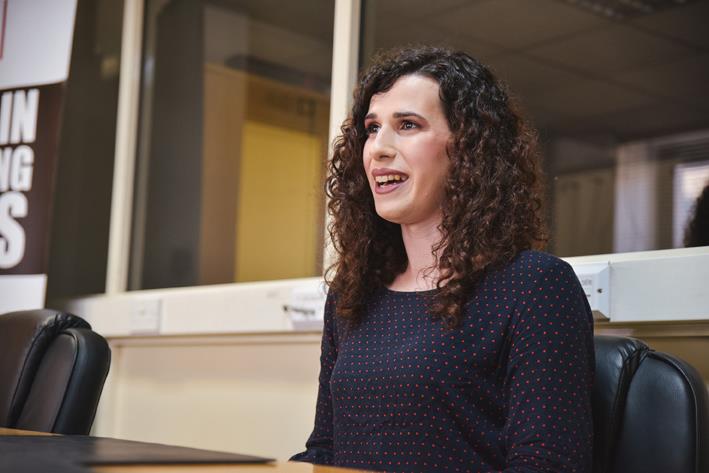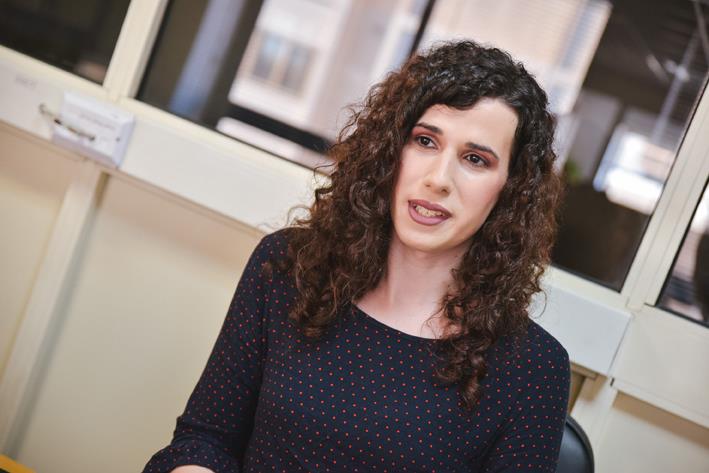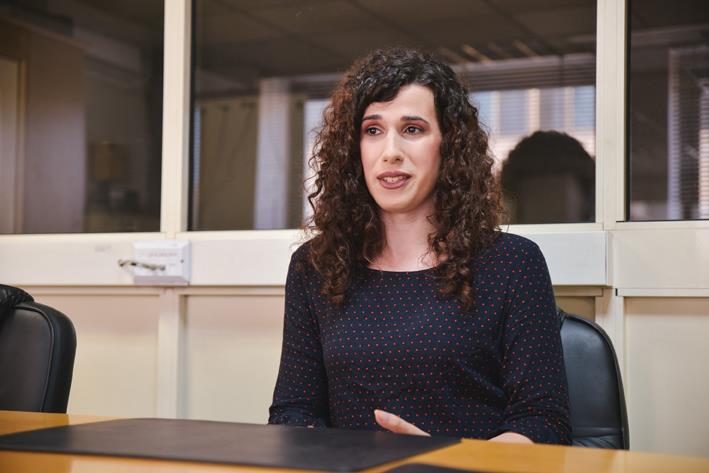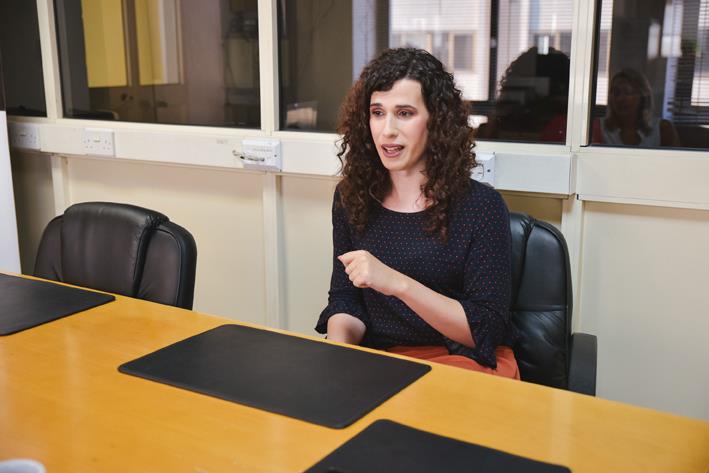A transgender woman described her experience teaching in a church school, as part of her university course, as “amazing” and said she did not have any negative experiences with either staff or students.
Amanda Cossai, 27, who started her transition into a woman two and a half years ago, said that “at first it was scary,” knowing she was being sent to a church school to complete her teaching practice.
At first, she was more worried about the staff than the student’s reaction, Amanda said in an interview with The Malta Independent. The staff were told beforehand that Amanda was transgender but when she got there they assured her that they want to take this as an opportunity to present something new to the students.
During her transition, Amanda said she felt she needed a complete change. She used to work in marketing before but now she is reading for a Masters in Teaching. She felt unhappy in her marketing job and wanted a job involving direct contact with people, having a direct effect on the person.
During her teaching practice, Amanda taught children aged 13 to 14 in the subjects related to business, including accounting and economics.
When you consider religious teachings, they always call for respect for one another, even for those who are different, Amanda said. Church schools, however, she noted, tend to lack diversity in terms of the students’ and staff’s backgrounds, who are not exposed to different cultures and people like her.

This school, however, wanted someone there to show the students and staff that being different is ok.
The students were very welcoming, Amanda noted, having decided prior that she would be open with them about being transgender from the first day she met them.
“It was the first thing I told them when I walked into the class. There was complete silence, I never heard that level of silence again,” Amanda said with a laugh. “I think they respected me a lot more being upfront.”
Amanda felt that if she had kept it hidden, she would not have built the same level of trust with her students. She also felt being upfront was important because students that age would have talked between themselves, asking if she was a man or woman.
“I wanted to show them that whatever they say would not bother me. I wanted to own my identity and I think it was very effective.”
When asked if the students asked her any questions, Amanda said not really, but they did end up talking about LGBT related subjects. She did comment that one of the students asked her what her name was before transitioning, which Amanda felt was too personal and did not want to answer.

She said that the question was probably innocent as the students are young and “it is something they will learn.” However, it did show that they took an interest.
At the end of her teaching practice, Amanda asked for feedback from the students and some did comment that they appreciated her being so open and someone even mentioned that they had an LGBT family member and that now they could relate better to them.
Student’s parents was more of a worry for Amanda as she says young people are more accepting. “I think it depends on the way you present yourself,” she added, saying that if you come across as a serious person then there should not be problems.
She does admit there could be parents who may be completely against the idea of their children having a transgender teacher but she says her goal is to change people’s perception, although teaching her subjects remains her priority.
Based on her experiences, Amanda does not fear discrimination when it comes to applying for a job, saying that she owns her identity and she has no problem answering any questions. She does admit though, that church schools might be a bit more difficult to get into.
Although her experiences have been positive, she does have friends in the LGBT community who have worked in church schools who had “horrible” experiences. Amanda adds, although discrimination might be a worry for some, she would anyway not want to work in any place she was not accepted.
One issue Amanda did face was when applying for University because she had not officially changed her name on her ID card. She spoke to people in charge but was told nothing could be done.
Her original name was used on all official University papers and attendance sheets which made her a bit “uncomfortable” because “you are forced to out yourself”. It was confusing even for lecturers because they would see her name on the attendance sheets but she was presenting herself as a woman.

Amanda says it was only a problem because it was not her choice and all lecturers were understanding and would refer to her as she wished.
Unrelated to the work environment, Amanda commented that she has had negative experiences with the general public. The issues she experienced, she believes, are not because she is transgender but because people are now seeing her as a woman.
Amanda recalls stories of men who have harassed her, adding that she has “experienced the loss of male privilege”.
She does, however, recall of another story of two men who approached her and out of the blue asked her if she was a man. The question stunned Amanda, as she was not expecting it, and her immediate answer was no. She told them she had a boyfriend and they left.
“Nothing too bad happened but these were not things that happened before my transition,” Amanda noted.
When it comes to dating, Amanda said that a lot of people are in it because they specifically want a transgender person. “This is very annoying for us as you do not want to be objectified. You do not want someone to be with you just because you are transgender.”
Amanda added that these people do not see her as a woman but as something different. Furthermore, these people are only in it for sexual reasons.
Asked if she thinks that transgender women are generally stereotyped sexually, Amanda said that things are changing. When she first started looking for information about being transgender, about 10 years ago, the image the media portrayed was sexualised.
Nowadays, transgender women are everywhere and they are given a voice, even online. 10 years ago Amanda said she could barely find any information on the subject.
In the past transgender people were considered as “freak shows” and something to laugh at, Amanda said, adding the issue is further perpetrated by drag queens, whom she supports. The public, however, makes no distinction between them and transgender women.
In general, the country is progressing, Amanda noted, and the laws do help because people are constantly being exposed to the subject. “However, it is not as it is good as it is made out to be.”
A gender clinic was launched in November last year, offering multi-disciplinary services to transgender individuals, however, Amanda noted it is very inefficient. There are very long waiting times to get an appointment at the clinic.

Amanda’s transition story
Even as a child, Amanda always knew she was different. “I didn’t know what it was but I knew I was different.” Attending an all boy’s school was not easy since she always felt unlike the other boys.
Hitting puberty, the other boys started talking about girls and she could not understand why. When she was about 16, Amanda learnt what being transgender was and every time she came across something related to the subject she would ask herself ‘am I like that?’.
Her reply would always be no because she felt it was too “extreme”, especially considering 10 years ago the perception of transgender people was very different. This went on for several years, but when she was 19 she was watching transgender people on TV and just broke down.
“I felt I needed to this and from then onwards I became obsessed with what needed to be done.”
Amanda did not know what to tell people or how to approach the subject. She was very afraid to tell her family because she did not think they would be supportive, although she hoped they would.
From that moment it was a year later when her mother found a letter she had written to her telling her about her wish. “It did not go well at all,” and her mother was totally against it.
Because of her mother’s initial reaction, it took Amanda about six years to start her transition. During these years, she experienced some very tough times, cutting out all of her friends because she refused to be seen as a male.
As years passed, her family started coming around and her mother, especially, started trying to understand. “She didn’t accept it but she understood it was something I needed.”
Amanda started seeing doctors, and in April 2017 she started her medical transition, taking testosterone blockers and oestrogen. “You have to be sure of your decision before taking the step because some of the changes are irreversible.”
The first time Amanda left the house dressed as a woman was petrifying, but another transgender friend was her support pillar during these times. “Having such a person made it a lot less scary and possible. I do not know where I would be without her.”
She never really announced her transition to people but one day decided to change her profile picture on social media and that was it.